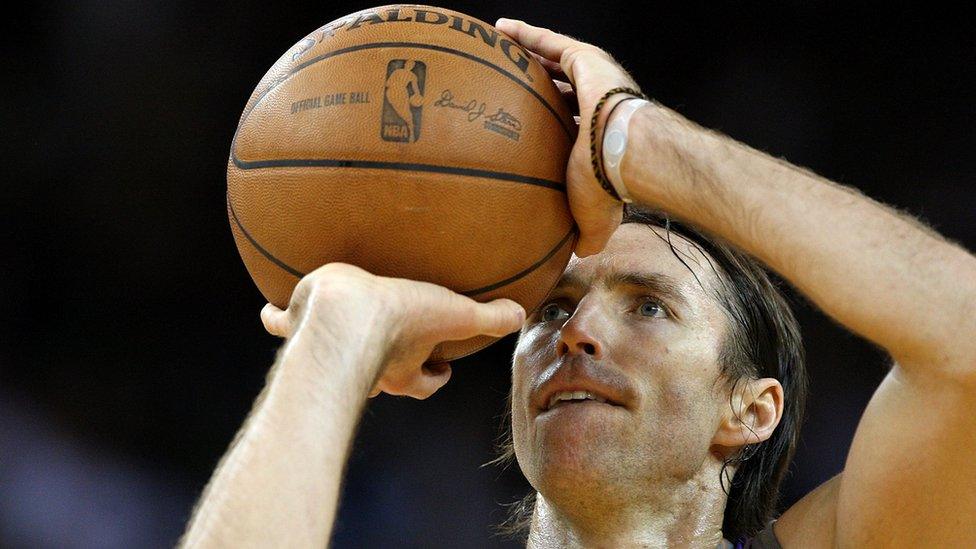Could James Comey have been a basketball superstar?
- Published

Former FBI director James Comey towers above the crowd
Former FBI director James Comey is among the tallest men in the United States at 6ft 8in (2m) tall.
Only one in 30,000 men in the United States can stand eye-to-eye or higher
But could Mr Comey - or any other very tall man come to that - have counted on their height alone to have a career in the US professional basketball league, the NBA?
"I'd calculate that someone who is 6'8" has about a one-in-200 chance of reaching the NBA," says Seth Stephens-Davidowitz, a data scientist from New York.
He has compared estimates of the populations of Americans at various heights with the recorded heights of NBA basketball players.
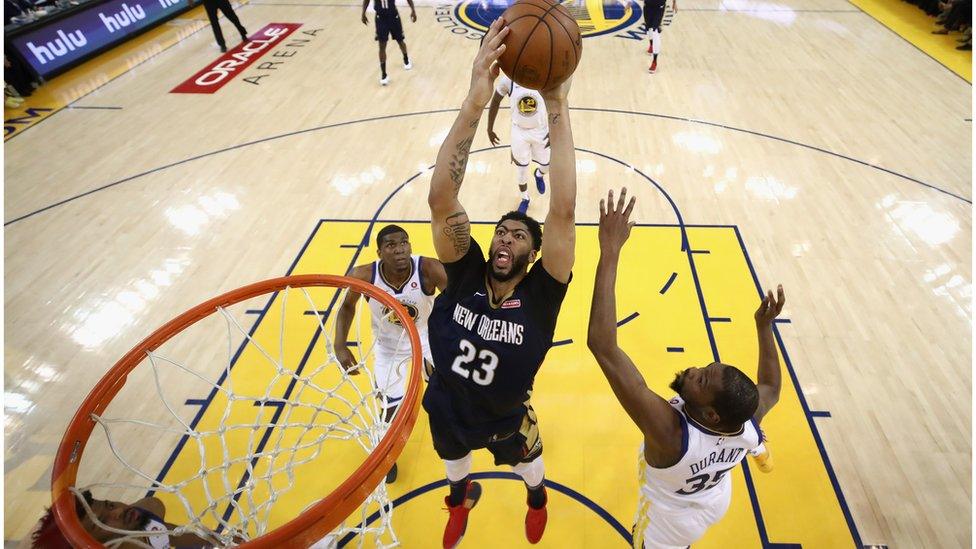
Anthony Davis of the New Orleans Pelicans goes up for a shot during the 2018 Western Conference semi-finals
"A man who's under six feet tall has around a one-in-one million chance of reaching the NBA," he adds. "A man who is over seven feet tall has about a one-in-seven chance."
Sports writer Sam Smith, who covered Michael Jordan's golden years at the Chicago Bulls, explains why coaches might pick someone for their height alone.
"The simplistic notion is that the taller you are, the closer you are to the basket, and the easier it is to score," he said.
"This has led to the cliché 'you can't teach height'. You can get better in shooting, you can get better in dribbling, but you can't get better in size."
So could a young Mr Comey have been spotted for his height alone and then coached into becoming a basketball great?
Well, talent-spotting primarily based on people's height has produced some amazing results.
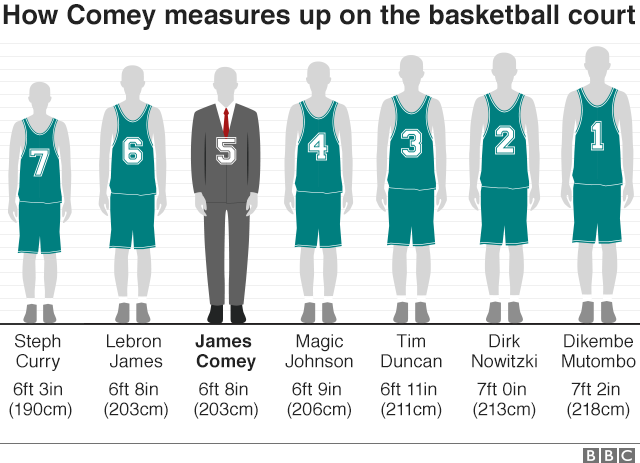
Players such as Tim Duncan, Hakeem Olajuwon and Dirk Nowitzki didn't start playing basketball until their late teens. They were talent-spotted because they were tall and then went on to become greats of the game.
The tallest players to play in the NBA were Gheorghe Mureșan and Manute Bol, who were each 7 ft 7 in tall.
But Mr Smith says team coaches can get a little too carried away with this height obsession. For every tall man who makes the breakthrough, there are probably hundreds of others brought into teams who ultimately amount to nothing.
What about the social aspect? Don't most basketball players come from tough backgrounds, turning to basketball as a route out of poverty?
According to Mr Stephens-Davidowitz, the data is clear. "Actually, the better your childhood background the higher your chances of reaching the NBA," he explained.
"You're more likely to reach the NBA if you came from a two-parent home rather than a single parent home. if your parents had you when they were older rather than when they were teenagers and if your parents were middle-class or upper-middle-class than if they were poor."
Mr Comey grew up in the well-to-do town of Allendale, located in one of the most wealthy counties in the United States, so he's got an advantage here.
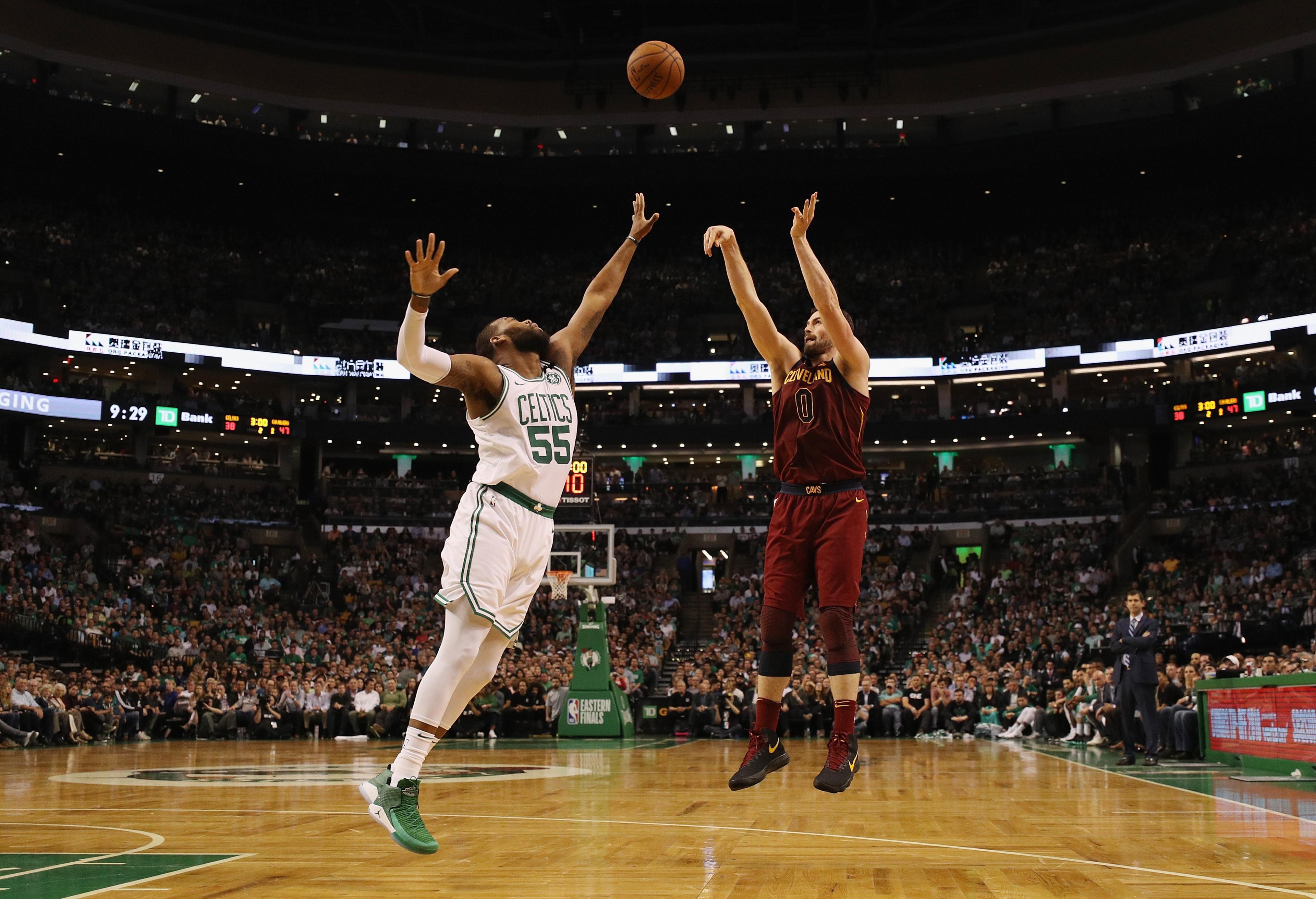
Kevin Love of the Cleveland Cavaliers shoots the ball against Greg Monroe of the Boston Celtics
But why does social class have such an influence over sporting success?
"One advantage is actually in giving height. It's been shown that kids from better backgrounds reach greater adult heights and this is due to better nutrition and better healthcare in childhood," says Mr Stephens-Davidowitz.
"The other factor is building what economists call non-cognitive skills. One of the biggest advantages of a good background is building skills like trust, perseverance, discipline and ability to get along well with others."
You may also be interested in:
A quarter of current NBA players are from outside the USA.
Mr Stephens-Davidowitz believes that the reason foreigners have made such an impression on the competition is because much of the rest of the world has caught up with the United States in terms of medical care and nutrition.
"There are an increasing number of people from around the world, from Africa and Asia as well, who are of great, great adult height. These other countries are now producing more seven-footers and a good fraction of them are talented enough to reach the NBA."
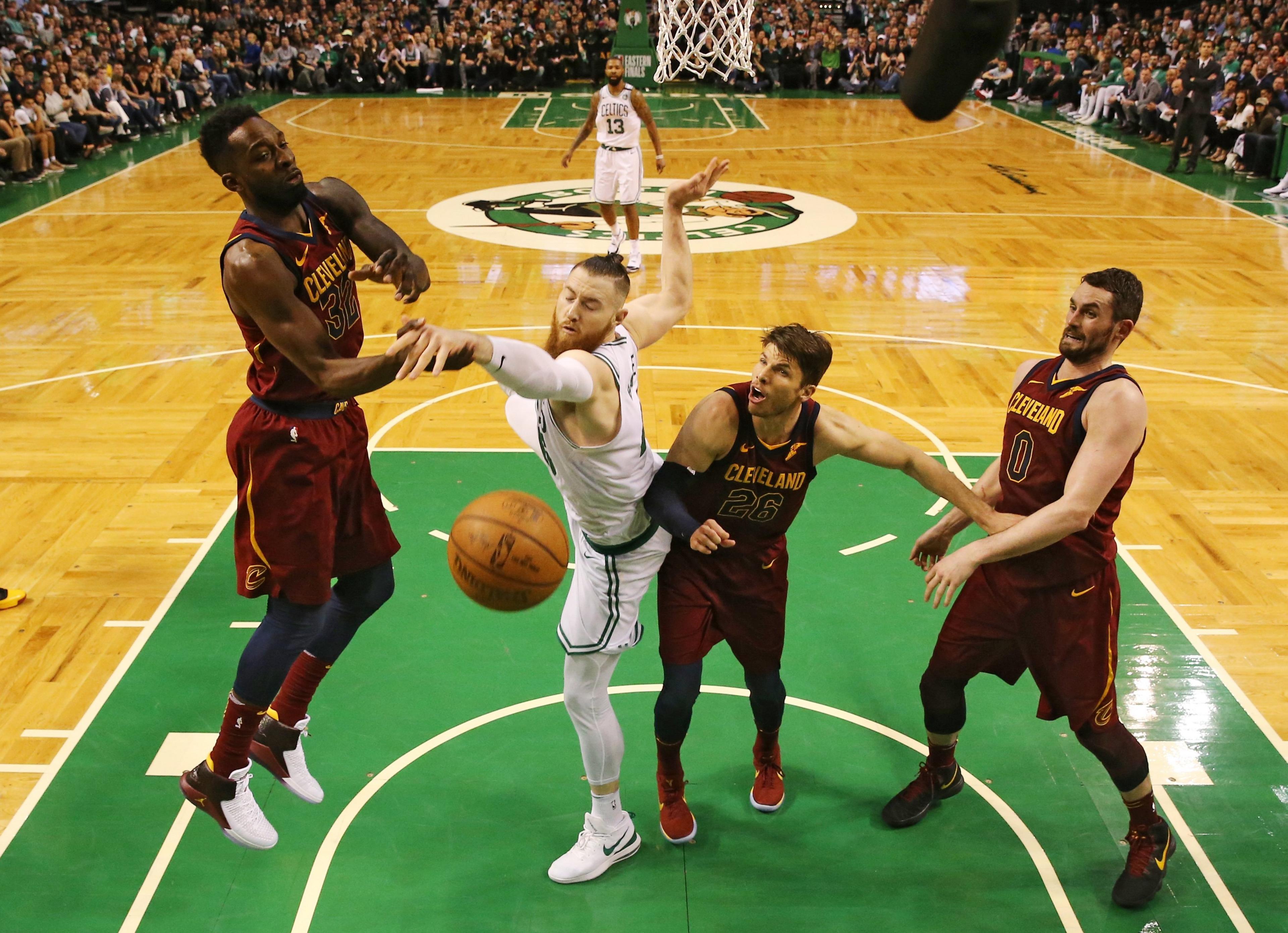
Jeff Green of the Cleveland Cavaliers battles to get the ball from Aron Baynes of the Boston Celtics
The dominant NBA team in recent seasons has been the Golden State Warriors, led by Steph Curry.
A specialist long-range shooter, he's only 6 ft 3in, considerably shorter than Mr Comey and many of the giants who have dominated the game in the past.
Curry's success, says Mr Smith, has got teams looking in a new direction, away from the big men.
"Sport is often copycat. When somebody succeeds, everyone tries to do the same thing. In the 1980s everyone thought you had to have a 6 ft 9in point guard because Magic Johnson was the dominant player," he says.
But the recent expansion in mathematical study of the game means there's less emphasis on size and more on long-distance shooting.
"When I was growing up in the 1960s, if you were 6 ft 8 in, you were probably going to make the team," says Mr Smith.
"Now if you're 6 ft 8 in, you probably have a better chance of a career in the FBI than you do in basketball."
Unfortunately for James Comey, he has neither.

Find out more:
More or Less was broadcast on BBC World Service at 19:50 GMT on Sunday 20 May. It is also available on BBC iPlayer.
You can listen again on the programme website or download the programme podcast

- Published14 May 2018
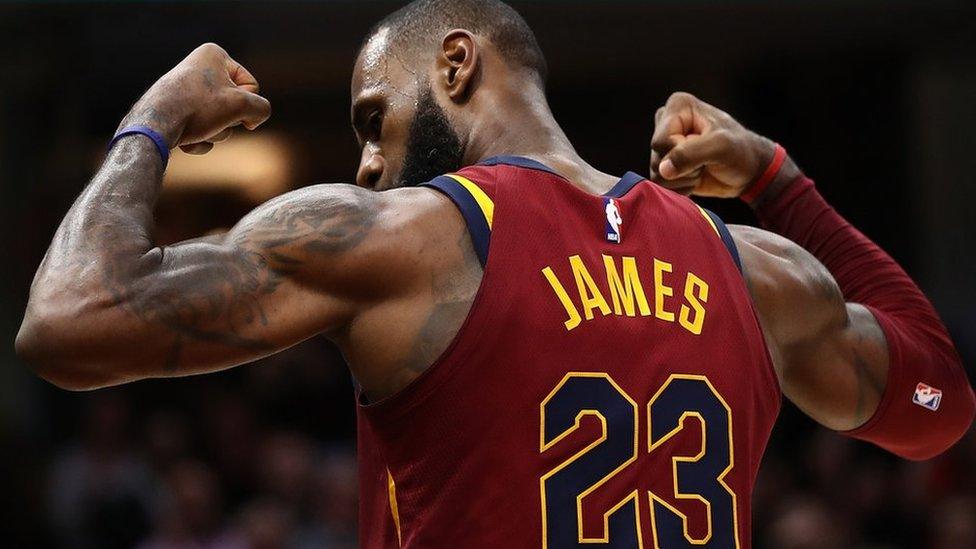
- Published7 June 2017

- Published16 November 2016
